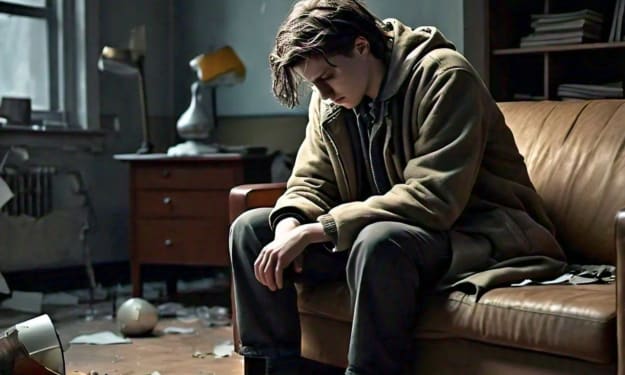
Forbidden Love and Second Chances: Exploring the Depths of Human EmotionsLove, in its many forms, has been a central theme in literature, art, and human experience for centuries. Two particular facets of love that have consistently captured our imagination are forbidden love and second chances. These themes explore the complexities of human emotion, pushing the boundaries of societal norms, and offering the hope of redemption and renewal.**Forbidden Love:**Forbidden love, often depicted as a love that defies societal or familial expectations, holds a special place in storytelling. It embodies the idea that love can transcend barriers and boundaries, even in the face of adversity. Here, we delve into the nuances of forbidden love and its enduring appeal.**1. Love Across Social Classes:** One common form of forbidden love is that which transcends social classes. This theme often explores the challenges faced by individuals from vastly different backgrounds who fall in love. Classic examples include Shakespeare's "Romeo and Juliet," where the Montagues and Capulets are feuding families, and Jane Austen's "Pride and Prejudice," where Elizabeth Bennet and Mr. Darcy come from different social strata.**2. Interfaith or Interracial Love:** In a world marked by diversity, love stories that navigate religious or racial differences resonate deeply. These narratives challenge prejudices and stereotypes, emphasizing the universal nature of love. "The Notebook" by Nicholas Sparks, for instance, portrays the love between Noah and Allie, who come from different social and economic backgrounds.**3. Love Amidst War or Conflict:** Love can also bloom amidst the chaos of war or conflict, where societal norms crumble, and humanity's vulnerability is exposed. "Casablanca," set during World War II, tells the story of Rick and Ilsa, whose love is thwarted by the exigencies of war and political intrigue.**4. Age-Discrepant Love:** Love that defies age differences explores the idea that love is not bound by age or generational gaps. "The Graduate" portrays the affair between Benjamin Braddock, a recent college graduate, and Mrs. Robinson, an older woman. This narrative challenges societal expectations about age-appropriate relationships.**5. Love Beyond Life and Death:** Forbidden love stories can transcend the boundaries of life and death. In "Ghost," the love between Sam and Molly persists even after Sam's murder, as he communicates with Molly from the afterlife. This theme evokes the idea that love can conquer even mortality.**Second Chances:**Second chances are a universal theme that speaks to our belief in redemption, personal growth, and the transformative power of love. These narratives often explore characters who have made mistakes or suffered hardships and are given an opportunity for renewal through love or forgiveness. Here, we delve into the profound concept of second chances in storytelling.**1. Rekindling Past Romance:** Many second chance stories revolve around lovers who reunite after years apart. In "One Day" by David Nicholls, Emma and Dexter meet on the same date each year, allowing readers to witness their evolving lives and the possibility of rekindled love.**2. Overcoming Past Mistakes:** Characters who have made significant mistakes or experienced failures seek redemption and personal growth through love. "Atonement" by Ian McEwan explores the consequences of a young girl's false accusation and her lifelong quest for atonement, ultimately finding redemption through love.**3. Healing and Recovery:** Love can also serve as a catalyst for emotional healing and recovery. In "The Silver Linings Playbook" by Matthew Quick, Pat struggles with mental illness and reconnects with Tiffany, who herself is dealing with grief. Their journey together illustrates how love can be a source of healing and strength.**4. Forgiveness and Reconciliation:** Second chance narratives often highlight the power of forgiveness and reconciliation. "The Fault in Our Stars" by John Green follows Hazel and Augustus, two teenagers living with cancer, as they navigate their own mortality and find love and forgiveness in the process.**5. Transformative Love:** Love has the capacity to transform individuals and their lives. "Eat Pray Love" by Elizabeth Gilbert chronicles the author's journey of self-discovery and healing through travel and relationships. It emphasizes the transformative nature of love as a means of self-renewal.In conclusion, forbidden love and second chances are powerful themes in storytelling that continue to captivate audiences. These narratives tap into our innate desires for love that defies societal norms and the hope for redemption and renewal in our own lives. Whether exploring the complexities of love that crosses boundaries or the potential for personal growth through second chances, these themes remind us of the enduring power of love in all its forms. They resonate with our shared human experiences, offering glimpses into the depths of our emotions and the enduring possibilities of the heart.
About the Creator
Enjoyed the story? Support the Creator.
Subscribe for free to receive all their stories in your feed. You could also pledge your support or give them a one-off tip, letting them know you appreciate their work.





Comments
There are no comments for this story
Be the first to respond and start the conversation.